

OPEN SPACES
Inside Open Spaces


Although we are happy to see the lengthening winter daylight, we are still embracing these quieter months and taking the time to reflect on our success over the past year. The achievements and milestones described in this new edition of Open Spaces are a result of your unwavering support and dedication to the mission of the Nantucket Conservation Foundation. You have my sincere gratitude for your generosity and commitment, which have been instrumental in stewarding over 9000 acres of precious land, ensuring that future generations can enjoy the natural splendor of Nantucket just as we do today. 2024 was a momentous year for our organization and we are thrilled to have you join us for 2025.
Last fall, our land management crew successfully revitalized our cranberry harvest at the Milestone Bogs. Their hard work and long days over the course of the year allowed the Foundation to harvest thousands of pounds of cranberries for local businesses and community members. We were also thrilled to continue the tradition of the Batacular Bike Race and Fall Festival at Milestone Cranberry Bog, a free, full day community event which saw hundreds of people filter through for bike racing, face painting, pumpkin decorating, and festive entertainment.
Over the winter, we will be completing construction on our multi-year Windswept Wetland Restoration Project. The popular trail network and newly restored wetlands will re-open soon with new interpretive signage and improved trail access. An immense amount of work went into this project including years of research conducted by our ecology team, dozens of outreach and education programs, and considerable preparations by our land management team; not to mention the expertise and funding contributed by our many collaborative partners. I encourage you
to visit this newly restored wetland when it reopens in early April to experience the fresh boardwalks and trails and learn how this former agricultural land has become an ecologically significant and resilient habitat.
Last year, we launched an exciting new research and community education initiative, the Nantucket Eel Project. Through this research our staff ecologists hope to expand our knowledge of the migration patterns of the elusive American eel. This project also incorporates community science, and anyone is welcome to join to get hands on experience with in-the-field science. We will be sampling for this project from March to May this year.
We are also excited to share our winter programming. These excursions, designed for all ages, offer a range of activities, including guided nature walks, scavenger hunts, educational talks by leading conservationists, and the first few events lead by our new Nantucket Conservation Club.
Lastly, I want to recognize the tireless work and passion displayed by our dedicated staff, trustees, and volunteers. Please be sure to follow along with our future work through social media and our monthly e-newsletter updates. I look forward to seeing many of you at our upcoming events and out on the trails.
With appreciation,

Cormac Collier, President & CEO
President & CEO
Cormac Collier
Vice President of Science & Stewardship
Karen C. Beattie
Director of Land Management
Nicholas J. Larrabee
Director of Research & Partnerships
Dr. Jennifer M. Karberg
Director of Advancement
Whitney Dayton Brunet
STAFF
Wildlife Research Ecologist
Danielle O’Dell
Plant Research Ecologist/Botanist
Kelly A. Omand
Interpretive Education Coordinator/ Ecologist
Neil Foley
Development & Donor Relations Manager
Mara Weiner
Marketing & Outreach Manager
Allison Levy
Accounting & Administrative Manager
Korilynn Adams
Administrative Coordinator
MaryAnn Bartlett
Development Associate Celia Cataldo
Land Maintenance Manager
Donald J. Mack
Properties Maintenance
Richard H. Mack
BOARD OF TRUSTEES
OFFICERS
Chair
John G. Macfarlane III
Vice Chair
Todd M. Knutson
Secretary
James Meehan
Treasurer
Charles K. Gifford, Jr.
Clerk
Marianne R. Stanton
Assistant Clerk
Mary West
TRUSTEES
Stephen Bartram
David A. Champoux
Colby Crenshaw
Charles K. Gifford, Jr.
Ande Grennan
Karen Grip
Lindsey Gund
Laura Hanson
Patrick Hehir
David Kaytes
Katie Keith
Todd M. Knutson
Isabelle Loring
John G. Macfarlane III
Jennifer Matthews
James Meehan
Daphne F. Mitchell
Sherwood Newell
Ann B. Oliver
Diane R. Pearl, MD
David Rattner
Bob Sommer
Marianne R. Stanton
Dr. Geoffrey C. Trussell
Rick Ulmer
Patrick S. Wayland
Mary West
Coastal Ecology Research Technician
Jisun Reiner
Environmental Educator Isaac Hersh
Facility Maintenance & Land Stewardship Technician
Gregory St. Aubin
ADVISORS

Richard L. Menschel
Susan Rein
Susan R. Shapiro
Marcia Weber
EMERITUS
Nathan R. Allen, Jr.
John H. Davis
Arthur Gosnell
Kate Miller
David B. Poor
David Ross
Richard G. Verney
Cranberry Season


Fall on Nantucket. A time when the busy bustle of the summer season fades into the cool, calm routine of year-round island life. Summer greens turn into autumn reds as people, animals, and plants settle in for the winter. Spotted turtles start their hibernation in the mud and burying beetles dig themselves into the ground. As leaves began to change colors and fall, there was one red that shone particularly brightly to us at NCF this year: the red of the cranberries at Milestone Bog. This was one of the best cranberry seasons in recent years. Staff at NCF harvested thousands of pounds of fresh cranberries over just a couple months and we were delighted to sell or donate berries to the island community.

Cranberry season started off strong with berries being sold out of our office each day. The teamwork between the Cranberry Bog staff and our office staff bagging berries was streamlined, quick, and allowed us to easily get this bountiful crop out to the community. To spread the word
and show people the fascinating process of cranberry harvest, our Education Coordinator Neil Foley led tours out at the bogs for several school groups. Island kids from toddlers up to high schoolers were brought out to the bogs and shown how to harvest and process cranberries.

On Neil’s tours, he would show students that before cranberries can be sold, they first need to be processed to remove any debris and bad or damaged berries. When cranberries are first harvested, the scoops bring up leaves, vines, and sticks, which need to be removed to get just the berries. Students watched as NCF staff dumped a crate of berries into the “blower,” a fan machine that blows air through the cranberries to remove the lighter debris.
Next, the students each selected a berry to test if it was a good berry or a bad berry. Dropping their chosen berries on the floor they would either bounce back up (a good berry), or thud onto the ground and splat (a bad berry). This of course would be a far too time consuming method to check the millions of harvested berries, so the professionals use an antique “bouncer,” built in 1928. NCF staff would carry a crate of berries up to the bouncer and pour them down. Good berries bounce over a barrier to be sorted into crates, while bad ones fail to make it over and fall into waste receptacles. The students then delighted in looking at the fresh good berries, ready to be sold. Many took some cranberries back to their classrooms to learn delicious cranberry recipes and try out some sensory activities or physics experiments of their own!

NCF’s integrated pest management practices, laborious hand weeding, and careful considerations helped our team throughout the growing season and brought in a substantial harvest of over 2,000 pounds of berries! From October 8th to early December, our staff were out each day in the bogs harvesting cranberries. 3rd generation cranberry grower Nick Larabee, NCF’s Director of Land Management, oversees around 25 acres of active bogs.
NCF is happy to report that our Fall Festival and Batacular Bike Race was a huge success, drawing in large crowds from the island community. The day saw racers bike around an 8-mile loop once or twice through the Moors, hayrides, lawn games, face and pumpkin painting, food trucks, and lots of cranberries to enjoy. Visitors were able to talk to NCF staff who showed off our antique cranberry processing equipment that is still in use today or head over to the merch tent to buy a batch! Looking to the future, we expect to continue harvesting cranberries each year and putting on this special, free community event.
As an island organization with deep roots in the community, we are proud to be able to carry on the tradition of cranberry farming that began so many years ago on Nantucket. From the school tours of the cranberry bogs, to purchasing berries locally, or celebrating the cranberry season with the fall festival, we thank everyone for the enthusiastic support which allows us to continue our cranberry operations.

WindsweptRestoration

In January of 2024, NCF and its partners broke ground on our Windswept Bog Wetland Restoration project. Now, in March 2025, it is just about complete. Since 2019 NCF has been working with the Massachusetts Division of Ecological Restoration’s Cranberry Bog Program (DER) to implement a watershed-level wetland restoration for this former cranberry farm property, located off Polpis Road in the northeastern portion of the island. After years of ecological research, planning, permitting, fundraising, grant writing, and finally reconstructing watershedlevel connections, Windswept is now a fully functioning restored wetland ecosystem, providing benefits to plants, wildlife, and people alike.
Of course, none of this project would have been possible without our project team members, including Jessica Cohn from DER, engineers Michael Soares and Dr. Julianne Busa from Fuss & O’Neill, Inc., and Travis Sumner from SumCo Eco-Contracting. Their vast expertise helped
accelerate and smooth the restoration project process. Also very critical to the project are our generous funders, including DER, the Southern New England Estuary Program (SNEP) Watershed Implementation Program, the Richard K. Mellon Foundation, and the U.S. Fish & Wildlife Service National Coastal Wetlands Conservation Grant Program.
Restoring the 40 acres of former cranberry bog cells at Windswept into a re-connected, natural wetland was no small feat and involved much prep work. Our plant research ecologist and botanist, Kelly Omand, spent many hours out at Windswept with her field assistants counting and mapping rare plant species so we would know where to avoid with the construction vehicles and which areas would not need to be restored. Danielle O’Dell, NCF’s wildlife research ecologist, and her team also spent a lot of time trudging through the bog ditches to monitor the movement patterns of spotted turtles. These regionally rare
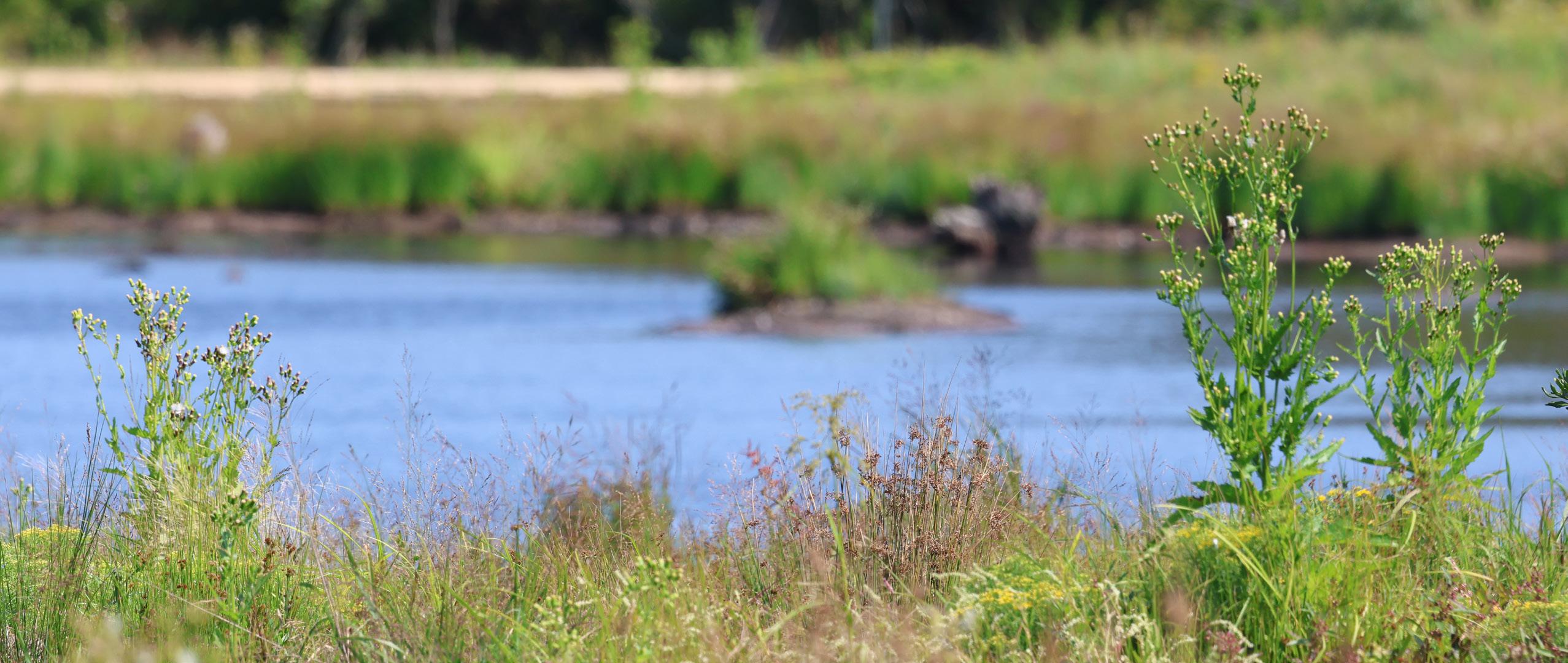


freshwater turtles used the shallow ditches of the former bogs during the spring, summer and autumn, but largely moved out into the surrounding wetlands to hibernate. From this research, we knew it was important not to disturb the turtles during the active portion of their life cycle, so all the construction work was deliberately timed to take place in the winter months when the turtles had vacated the bogs. To learn more about these projects, continue on to page 10.
With the completion of the final phase of construction in mid March, Windswept will soon be open to the public as a restored wetland rather than a cranberry bog. Features of the newly created wetland habitat include permanent ponds, vernal pools, and connected water channels, as well as upland plant communities. While it was of utmost importance that this restoration created a naturally functioning wetland system, considering access and public use of the property was a major consideration in the plans. To keep this beloved property in use for generations to come, we ensured that there would continue to be a network of trails, which now includes boardwalks that cross the former bogs and beautiful overlook views built from the excess soil pulled from the bogs. Although the construction phases

of the Windswept restoration project have finished, there is more work to be done both for us at NCF and for the natural processes of the island. Over time, wind, water, and plant and animal life will continue to shape Windswept. The construction work done in this project has paved the way for the slow process of ecological succession to take place. Early colonizing plants will start out in the newly turned over soils and slowly compete with others for space. Thus, in 10, 20, or 30 years Windswept may look very different than it does today.
NCF’s ecology department staff plan to continue to monitor changes at Windswept as we measure the success of this project. We want to see how the turtles continue or change their use of the wetland, and which rare plants continue or fail to thrive. Over a longer time span, Windswept, as one of the lower lying areas in the northeast of the island, may even see some salt marsh habitat establish as sea levels rise. This will not happen for decades, but planning for the future by creating resilient natural areas is an important consideration when undertaking restoration projects like this. We encourage you to continue to visit Windswept for great bird watching and spectacular views of changes in nature over the coming years.

October 4, 2023
March 16, 2024
September 30, 2024
COMMUNITY PROGRAMS



The Nantucket Conservation Foundation seeks to be a resource for both the year-round and seasonal island community. To accomplish this, we host a number of free community events and programs throughout the year. These events are great ways for people of all ages to get outside on Nantucket and engage with the natural areas of the island.
For the very young crowd, we have an incredible partnership with the Nantucket Community School! Little Nature Explorers walks led by Neil Foley, NCF’s Interpretive Education Coordinator and Ecologist, are focused on children age Birth-5 years old and their families. These short family-friendly walks take children out to find spectacular nature experiences at various NCF properties. Neil might show off some cool beetles or head down to the water to look at crabs and scallops. These walks pop up throughout the year so check out the Nantucket Community School Youth Programming calendar to sign up!
Moving up, for the school kids on break looking for some adventure, we offer our popular Staycation Scavenger Hunt. School breaks can be a time for traveling or to take a week off and relax at home. For those who stick around on the island during this time, we have created a cross-island scavenger hunt. Family-friendly riddles and clues will lead you to interesting locations on NCF properties all around Nantucket. Solve the riddles and visit all the spots to win a prize back at our office!
NCF has recently launched the Nantucket Conservation Club, a group created to foster community among early career conservationists or environmental enthusiasts in their 20s to 30s. The club will hold events a few times a year to gather like-minded young people for fun, food, games, and conservation discussion. Our inaugural event was a science trivia night back in January!
Open to all ages, but primarily attended by adults, NCF also offers a winter walk series several times a month beginning in January. Join us to see the gorgeous Nantucket winter landscape and hear from our ecologists and educators on many topics including island natural history, coastal resilience, American eel migration, invasive species management, and wetland restoration.
Your support matters.
The Nantucket Conservation Foundation relies upon independent contributions from individuals who value the island’s natural beauty and its future. Your support allows NCF to protect the over 9,000 acres of land, 100 miles of trails, and 17 miles of coastline it owns and stewards, to conserve Nantucket’s natural resources, and to engage in impactful ecological research. Each and every gift makes a difference. Thank you for joining us in our work to preserve Nantucket’s fragile and beautiful environment.


Scan to support the
Nantucket Conservation Foundation

Life in a New Wetland
With the completion of construction on the Windswept Restoration Project, the question on the mind of the NCF ecology team becomes: how well is it working? A restoration project of this scale is uncharted territory for NCF and, despite similar projects occurring elsewhere in the state, we want to make sure that this restoration has a positive impact on the ecology of the area and surrounding watershed. To determine this, Ecologists Kelly Omand and Danielle O’Dell have been working with their teams, collecting data on the growth of plants and the movement and habitat use of spotted turtles at Windswept. This data can be compared to data collected pre-restoration so we know if the project has encouraged plants and wildlife to thrive in this new wetland system.

REGROWTH
Phase 1 of construction occurred in winter 2024 and the ensuing growing season allowed us to learn from the project before completing construction work in spring 2025. This phase of restoration work created more open
water in the restored bogs and transformed both the wetland and upland vegetation by bringing buried wetland soils and seeds of wetland plants to the surface. Some of these seeds may have been lying dormant in the soil up to 100 years! In the process of restoration, the construction team re-shaped the landscape, creating a natural gradient from low elevation wetland to higher elevation upland.
In the new lower elevation aquatic pool habitats, bur-reed, greater water-starwort, and spike sedge became abundant. Rush species and members of the sedge family grew rapidly in the exposed mud, along with many wildflower species such as slender blue flag iris, wetland species of blue-eyed grass, and New York aster. The vast majority of the new plant growth around Windswept came from the dormant seed banks, but in a few areas we added locally collected seed of moisture-loving species to complement the existing wetland vegetation. Along the eastern and northern part of the bogs, Kelly planted swamp rose mallow and coastal Joe-Pye weed, and by late summer we saw young plants from these seed additions flourishing.
The upland deposition areas, where soil was placed after being removed from the restored bog cells also saw rapid plant growth in the late spring and summer. In addition to allowing the existing seed bank of the soil to germinate, we sowed seeds in uplands around the eastern area of the bogs. These seeds will help enhance the diversity of the grasslands developing on the higher ground surrounding the newly restored wetlands. This upcoming growing season, expect to see similar vast changes in the heart of the newly restored wetlands. With construction at the central bogs complete and spring on the horizon, this season of regrowth should be spectacular.
WILDLIFE
A vitally important aspect of this restoration project was re-connecting the waterways that flow through the property. The former bog cells were divided from each other by large berms, and further subdivided by crisscrossing ditches. After restoration, the water now flows from the southernmost corners of the wetland to the northern channel that eventually empties into Polpis Harbor. This new connectivity of water helps the many wildlife species that use waterways, including species of fish, eels, and three species of turtles (snapping, painted, & spotted turtles).
Danielle O’Dell has been monitoring the rarer spotted turtle population at Windswept for several years. This involves capturing turtles in the ditches of the bogs and attaching radio transmitters to some to track their movements after release. Now that the ditches have been removed and replaced with interconnected ponds, the turtles have far more freedom to move about the wetland. Danielle has been tracking the turtles and their new movement patterns to see how they utilize their new space and whether there are changes to how and when they use particular habitat types.
Of eight turtles that were affixed with transmitters this season, four consistently used the new wetlands. One of those especially seemed to favor the new wetland at the northeastern corner of Windswept. This area had once been four divided bog cells, but the restoration allowed a
more natural reconnected habitat to take shape. Over the season, this turtle moved extensively throughout the entire wetland. She crossed the larger, open water area, but mostly kept to shallow pockets of water where there was more vegetation. This is typical for spotted turtles, who tend not to like large bodies of water. After the summer, she moved right back into the nearby wetlands – her usual winter home.
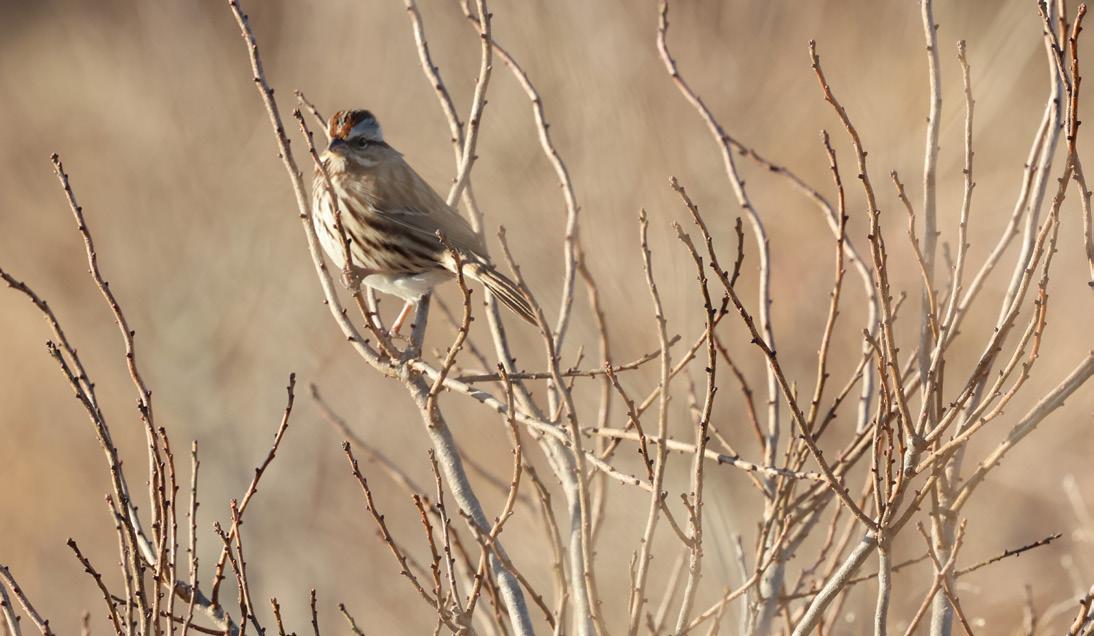
With a similar re-capture rate to previous years, and other turtles using the new wetlands, Danielle is happy to see that the turtles don’t seem to be negatively impacted by the restoration. What’s more is that many are using the new wetlands to great success! Allowing more open water while maintaining smaller, shallower pockets creates a diverse habitat that wasn’t available before. Not only are spotted turtles using the area to their benefit, but other turtles, fish, frogs, and birds are as well. This increase in diverse habitats should help bring about an increase of diverse species, and an altogether healthier ecosystem.

Nantucket Eel Project

Last year, NCF launched the Nantucket Eel Project, a community science project intended to help us gain a better understanding of the migration patterns of the American eel (Anguilla rostrata). Eels are a fascinating species of fish that we know relatively little about. What we do know is that American eels start their lives hatching out of eggs in the Sargasso Sea, a large floating mat of sargassum seaweed in the middle of the Atlantic Ocean. From there the baby eels, known as leptocephali, use ocean currents to make their way to the east coast of North America. By the time they reach the coast they have metamorphosed into glass eels, 2-3 inches long and are almost completely transparent. The Nantucket Eel Project

focuses on tracking eels at this life stage. The glass eels work their way upstream in rivers and estuaries and slowly change into elvers, young eels with pigmentation, then their two adult stages of yellow eels and silver eels. After around 20 years, silver eels then make their way back downstream into the ocean and over to the Sargasso Sea to spawn.
Started by NCF’s Coastal Ecology Research Technician Jisun Reiner, and NCF’s Environmental Educator Isaac Hersh, the Nantucket Eel Project seeks to learn more about the life of American eels by catching and counting glass eels during their migration out of the ocean and into the island’s freshwater system. In addition to collecting useful data on eel migration, the project is open to community volunteers interested in getting hands on experience with a field research project.
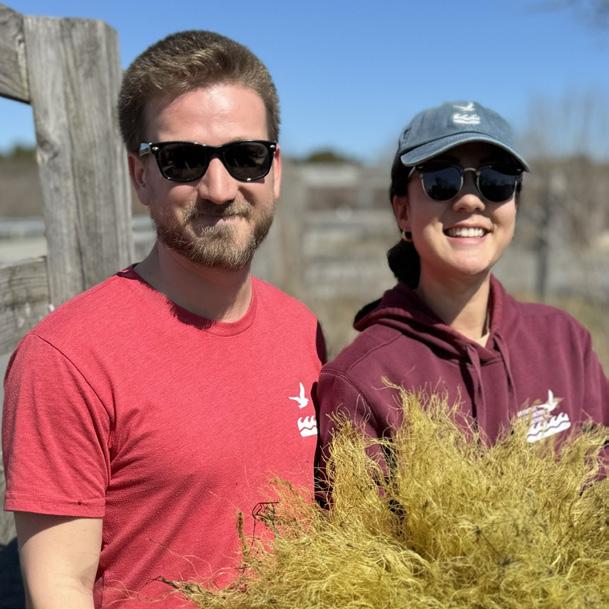
To catch and count the glass eels we built eel mops (see picture on opposite page) – contraptions made from unfurled rope attached to plant saucers which mimic an eel’s natural habitat of algae or seaweed. The eels hide in the fibers of the rope on their journey upstream, so when we pull the mop out of the water the eels come with it. These are passive traps, meaning the eels can come and go as they please. Even though we are not able to get full accounts of all the eels passing through our sample sites, we do get a general idea of the eel numbers and overall trends as well as strong data on the timing and location of
the migration. Once we move all the eels from the mop into a bucket we can begin counting them. On one day last year we counted over 100 eels in a single mop! To put that into perspective, our average count was around 16 eels per mop. Along with the eel counts we also keep track of the tide and time of sampling, and environmental factors such as water and air temperature, weather conditions, and water speed. Collecting these variables helps us determine what impacts the eels on their migration journey.
In 2024 we engaged 16 community members, school groups, and personnel from 5 island environmental nonprofit organizations. The community members collected water and air temperature, weather conditions, water velocity data, and helped to count almost 1000 eels over 19 sample days! With this promising community involvement and initial data collection, the Nantucket Eel Project looked to expand. This year we hope to have more volunteers, involve more island conservation organizations, and offer field trips to school groups. As you read this, we have already begun the 2025 season of eel sampling and will continue sampling until the end of May. If you’re interested in volunteering or just coming out to see what it’s all about, come to our Eels and Oysters Encounter on March 22nd (see page 14) or head over to our website to sign up!


Excursions
MARCH - APRIL 2025




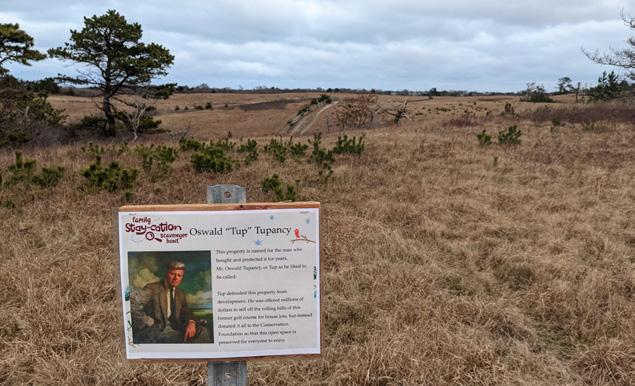
MARCH 8
Masquetuck
Travel the short loop through a small, fascinating hardwood forest that extends to the shores of West Polpis harbor with opportunities to see winter ducks, talk shellfish, and see other residents of this ecologically rich area.
MARCH 22
Eels and Oysters Encounter
Visit with Jisun Reiner and Isaac Hersh as they further their research into Nantucket’s population of American Eels. Learn the unbelievable natural history of this species, see them up-close-and-personal, and discover the winter ecology of our artificial oyster reef and salt marsh habitat.
APRIL 5
Windswept Bog
The watershed-level restoration project at Windswept Bog is almost complete! Be among the first to explore these retired bogs after phase two construction and at the start of the 2025 growing season. See the work we’ve done, understand the transitional journey of this property and learn about the diversity soon to flourish at Windswept!
APRIL 12
Southern Pine Beetle Walk
This is an important and targeted walk with Wildlife Research Ecologist Danielle O’Dell to see the effects of Southern Pine Beetle infestations up close. Learn the signs to look for and understand the significant impact this southern species could have on our island forests.
APRIL 19-28
Staycation Scavenger Hunt
Sticking around for spring break and looking for a fun activity to get outdoors? Solve family-friendly riddles and clues to lead you to interesting locations all around Nantucket! Visit all the spots to win a prize back at our office!
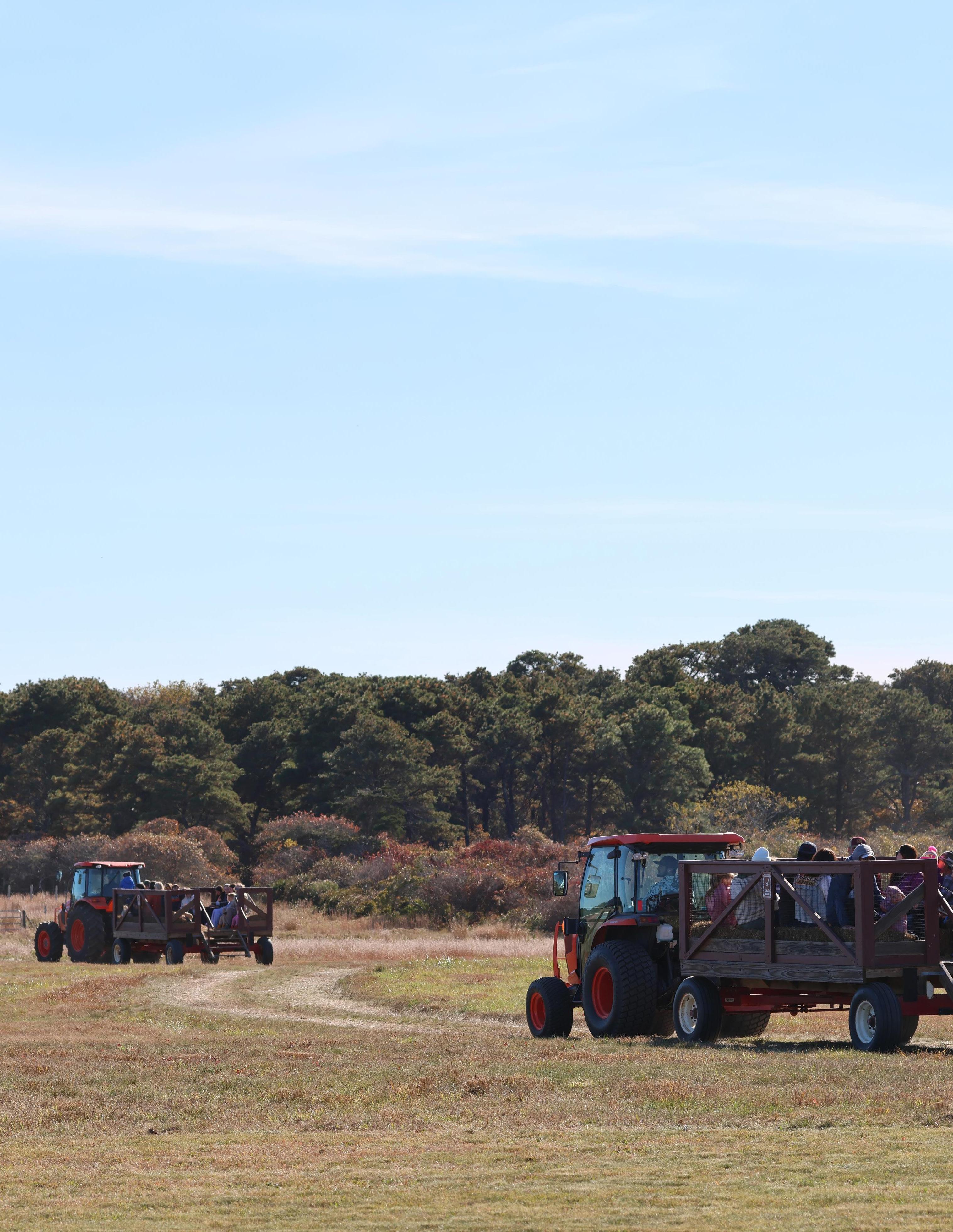
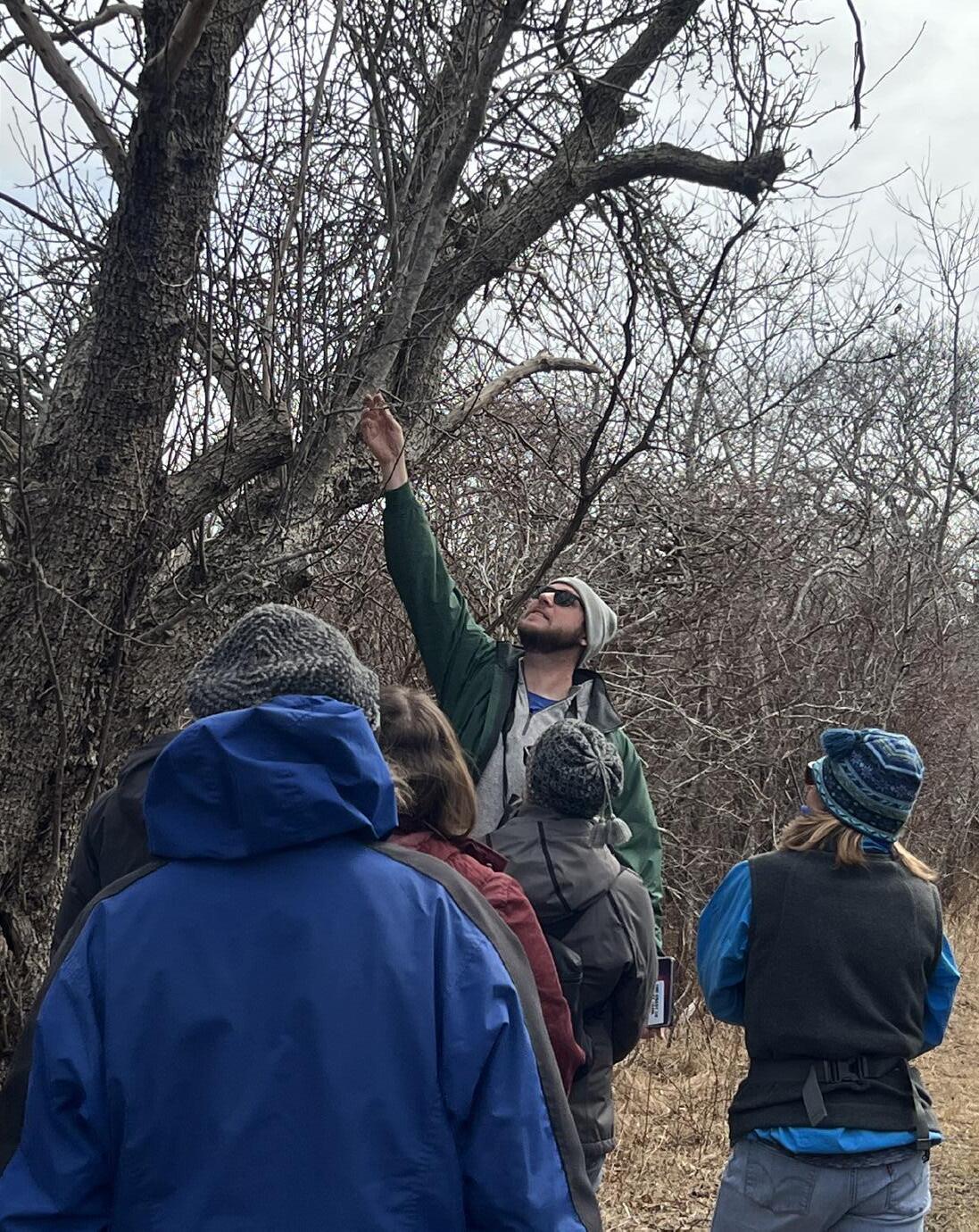


OPEN SPACES
Nantucket Conservation Foundation
Post Office Box 13
Nantucket, MA 02554-0013

The Nantucket Conservation Foundation owns, protects, and stewards over 9,000 acres of land and coastal shoreline, conserves Nantucket’s rare and significant natural resources, and engages in impactful ecological research to inform resource management and further our knowledge of Nantucket’s unique ecosystems and species. We share our environmental expertise with the wider community and provide educational and recreational opportunities to encourage respectful enjoyment and appreciation of our properties.
